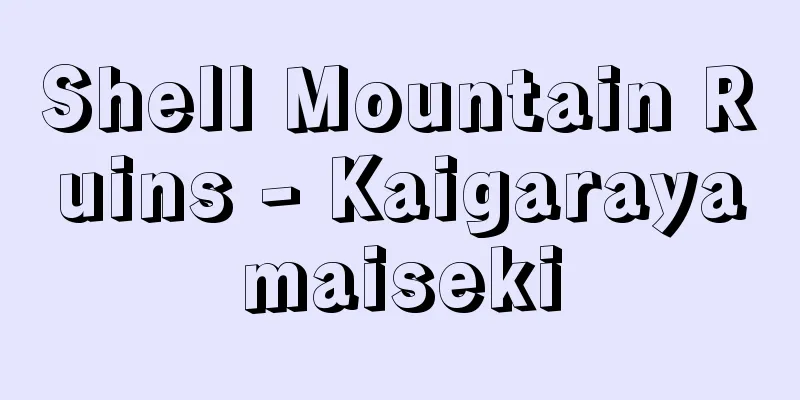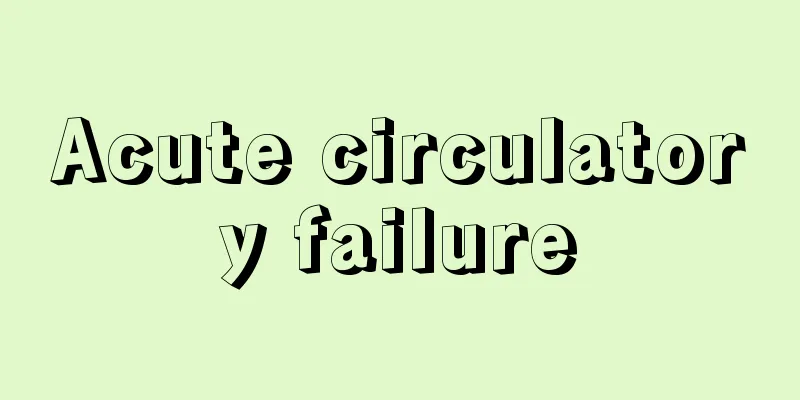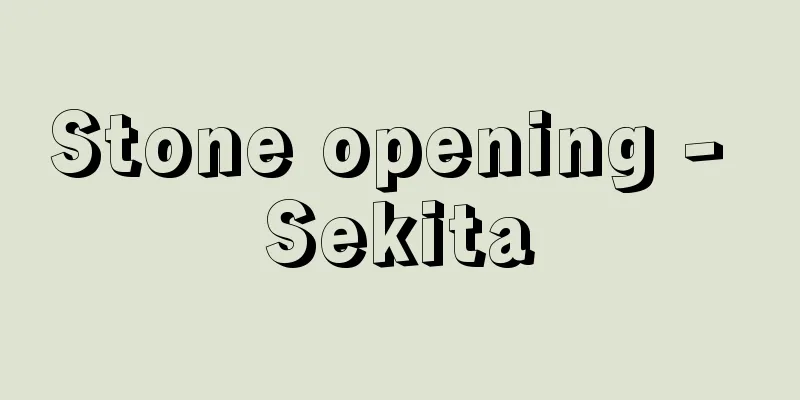Shell Mountain Ruins - Kaigarayamaiseki

|
...A small amount of pottery and stone arrowheads from the late Jomon period have been excavated from the sandy soil layer below the shell layer, but no continuation to the Yayoi period has been found. Sites from the middle and late Yayoi periods are also scattered around the shell mound, and these are sometimes collectively referred to as the Kaigarayama Site. Furthermore, the area to the north stretches for several kilometers and is a vast archaeological area with shell mounds from the middle to late Yayoi periods and so-called square moat tombs. *Some of the terminology that refers to the Kaigarayama Ruins is listed below. Source | Heibonsha World Encyclopedia 2nd Edition | Information |
|
…貝層下の砂質土層からは少量の縄文文化後期の土器と石鏃が出土しているが,弥生文化への連続は認められない。この貝塚周辺には弥生文化中期と後期の遺跡も点在し,これらを総称して貝殻山遺跡とよぶ場合もある。さらに北方一帯は数kmにわたって,弥生文化中~後期の貝塚や,いわゆる方形周溝墓を伴う広大な遺跡地帯となっている。… ※「貝殻山遺跡」について言及している用語解説の一部を掲載しています。 出典|株式会社平凡社世界大百科事典 第2版について | 情報 |
>>: Family: Parasitidae - Parasitidae
Recommend
Kudamatsu [city] - Kudamatsu
A city in the southeastern part of Yamaguchi Prefe...
Oman no Kata - Oman no Kata
Year of death: 11th October 1711 (20th November 17...
Law-abiding struggle (law-abiding struggle)
In Japan, strikes by labor unions in the public se...
Haze - Mist
[1] (The noun form of the verb "kasumi (mist)...
Veronica arvensis (English spelling) Veronicaarvensis
… [Kei Yamazaki]. … *Some of the terminology that...
Madame Jeanne‐Marie Bouvier de la Motte‐Guyon
1648‐1717 A French Catholic mystic. During her chi...
Antifebrile
...Acetanilide is less susceptible to oxidation t...
Pometia pinnata (English spelling)
...Lychee and longan in southern China, rambutan ...
Learning center - gakushujo
…Before World War II, it was known as an educatio...
Kappinto - Kappinto
An armed group of peasants active in central and s...
Ibuki - Ibuki
It is an evergreen coniferous tree of the Cupress...
Foundation - Ishizue
〘Noun〙 (Formerly "ishisue", from the mea...
Training Corps - Training Corps
...An army non-commissioned officer training inst...
Acheilognathus tabira erythropterus
A freshwater fish of the Cyprinidae family. Body l...
Kirifuri Plateau - Kirifuri Plateau
A plateau on the southeastern foot of Mt. Nyoho a...









